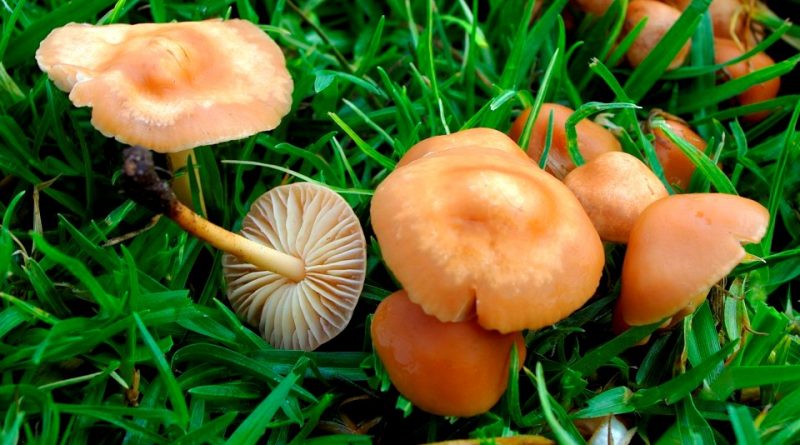Marasmius oreades
Marasmius oreades
The Marasmius oreades (Bolton) Fr., commonly called “Gambesecche”, is a mushroom of the Marasmiaceae family.
Systematics –
From the systematic point of view it belongs to the Eukaryota Domain, Kingdom Fungi, Basidiomycota Division, Basidiomycetes Class, Order Agaricales, Family Marasmiaceae and therefore to the Genus Marasmius and to the Specie M. oreades.
Etymology –
The term Marasmius comes from the Greek μᾰρασμός marasmós decay, consumption: due to the characteristic reviviscence of the carpophore after rain or high humidity. The specific epithet derives from the Greek Ορειάς Ορειάδος Oreiás Oreiádos Oreadi, name of the Nymphs of the mountains: with reference to the mountain environment of growth
Geographic Distribution and Habitat –
Marasmius oreades grows in meadows in circles (the so-called “witch’s circles”) or in rows along grassy paths in the period from spring to autumn.
Description –
The Marasmius oreades is recognized for its small, fleshy-leathery, smooth, convex, then flat and slightly umbonate hat, 2-6 cm in diameter, leather-colored or hazel-colored or light ocher or whitish. The lamellae are white, then ocher-clear, distant, free, intercalated by lamellule. The stem is white-hazel, tenacious, hard, full, cylindrical and fistulose. The flesh is whitish, which dries without deteriorating with a pleasant smell of bitter almonds due to the presence of very small amounts of hydrogen cyanide which, even if perceptible to the smell, do not represent a danger to health. The taste is sweet and tastes like hazelnut. The spores are elongated or ellipsoidal and white in mass.
Cultivation –
This mushroom is not among those cultivated because it is very widespread in Italy.
Uses and Traditions –
The Marasmius oreades or “Gambesecche” even if it is not toxic, and indeed, also tastes good, is one of those for which precaution is not recommended, mainly for two reasons. The first is that it is very small, therefore difficult to collect; moreover, being in fact of such small size, it often grows together with other poisonous species (in particular with small deadly Lepiota), with which it can be confused. It is also similar to small mushrooms, of the genera Marasmius and Collybia and the less expert can confuse it with poisonous or even deadly species, belonging to the genera Inocybe, Clitocybe, Lepiota and Galerina. However, it is absolutely well known and appreciated for its goodness, particularly in northern Italy. A good way to recognize it is to manipulate the stem that is quite substantial and full.
Preparation Mode –
The edibility of the Marasmius oreades is excellent. It is a fungus that lends itself to different cooking methods and because of its aroma it is an excellent mushroom also dried. For use remember to remove the stem while the hat can be dried, and then crushed to obtain a spice with which to flavor the dishes. Alternatively, fresh hats can be used to prepare sauces and gravies with which to dress pasta or polenta, preferably without adding other ingredients, which would cover their delicate and aromatic flavor.
Guido Bissanti
Sources
– Wikipedia, the free encyclopedia.
– Cetto B., 2008. Real mushrooms, Saturnia, Trento.
– Pignatti S., 1982. Flora of Italy, Edagricole, Bologna.
– Conti F., Abbate G., Alessandrini A., Blasi C. (edited by), 2005. An annotated checklist of the Italian vascular flora, Palombi Editore.
Warning: Pharmaceutical applications and alimurgical uses are indicated for informational purposes only and do not in any way represent a medical prescription; there is therefore no liability for their use for curative, aesthetic or food purposes.


